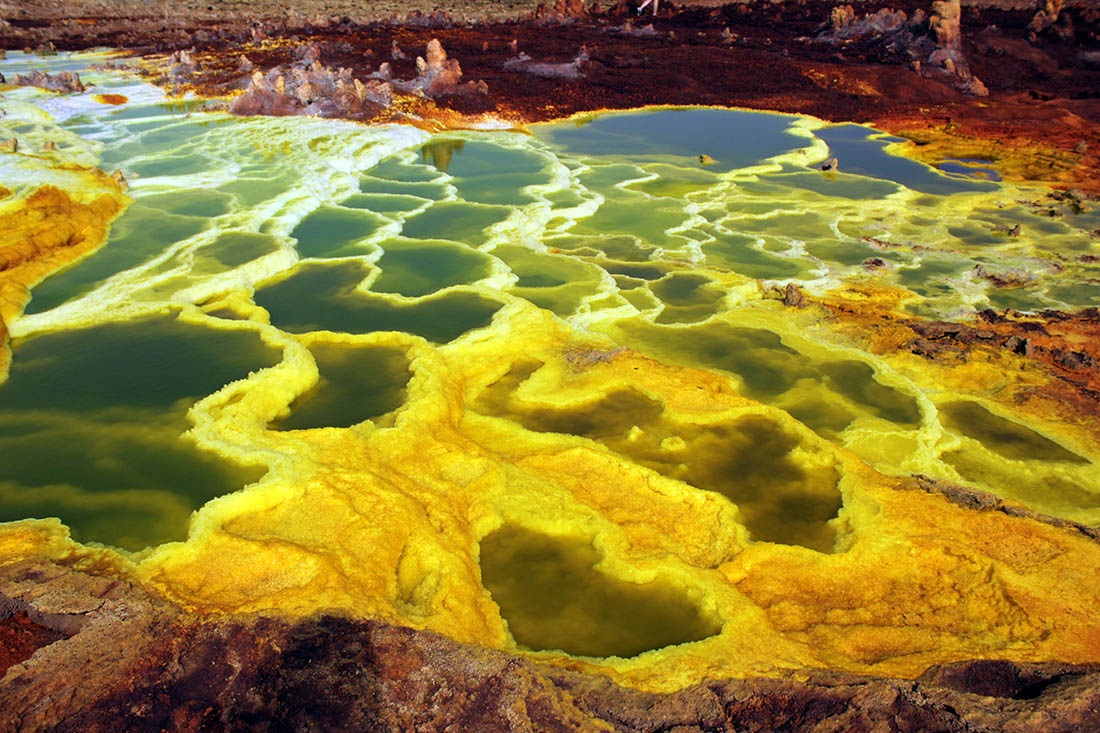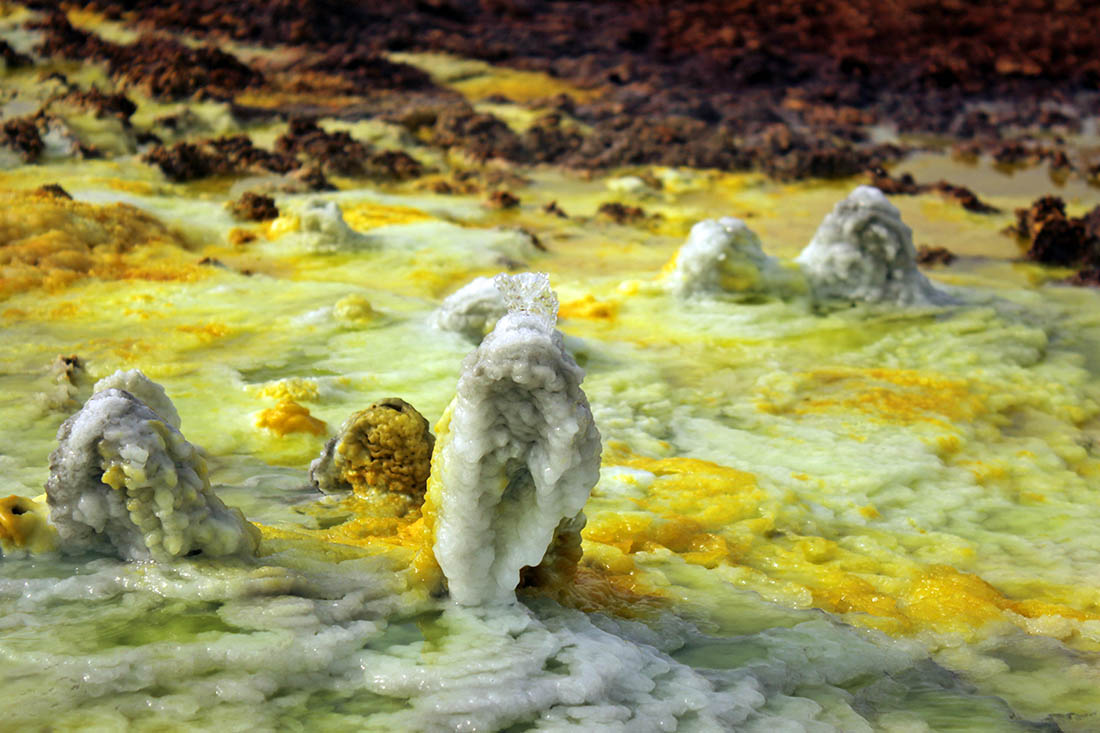“Wow,” I exclaimed. Before me was an alien surface, the likes of which I have never come across on this planet. It was desert red with patches of yellow pools of sulphur – hot boiling water points where salt crystallised into small stalactites with green pools of potassium surrounding them.
“Welcome to Dallol,” my guide grinned. “The word means colourful.” And indeed it was.
“The pools keep shifting, changing where they come up from,” he pointed to dried up sections of yellow sulphur. “Maybe last week the water was boiling up from here,” he pointed across the way. “Now it’s from there.”
The Italians were the first to try and extract potassium from this area. Their old military camp lay in rusty ruins nearby. But it is no wonder they failed to conquer this land – if the mountains didn’t stop them, the heat definitely helped.
Walking around I felt like I was in the scene of an episode of the classic Lost In Space series from the ’60s. I was hoping the Robertson’s robot would suddenly appear, flailing its arms about, beeping out, “Danger! Danger! Danger, Will Robertson!”
We headed back to the cars and drove along the rock walls to ‘New York City’ – a collection of pure salt pillars rising up about 60 metres, looking like the skyline of the famous city for which it was named. It was mind-blowing to see what nature had created.
We found a shaded spot and rested before returning to the cars and driving out, stopping by a sulphur lake, its waters boiling up in yellow bubbles. A geologist surveying the area was happy to explain that the water was “600 degrees. No one knows the depth of it and it has a pH level of 3.5.”
“What does that mean?” I asked.
“It means its acidity levels alone will kill you,” he said straight-faced.
We parted ways and headed deeper into the salt lakes to visit the Afar people who collect blocks of salt, which they strap to their camels. I counted 49 camels in one caravan that we passed.
“They come out here twice a week,” my guide explained, “and sit here collecting the blocks of salts from morning until evening.”
The Afar people use the old method of cutting out a chunk of salt and then shaping it with a simple salt-shaper into a perfect square block about five centimetres thick, which they then pile up eight pieces high. Once all the salt is collected, they load up the camels, tethered to each other nose-to-tail, and walk them out to local towns and villages.
“Each block is sold at 6 birr (US$0.27),” my guide said, picking one up.
There’s no shade out here. The Afar people just sit under this unimaginable heat all day beside their camels and cut up salt. “They are very strong people,” my guide said admiringly.
Many thanks to Psyman from The Nomadic Diaries for this wonderful contribution! Be sure to stop by The Nomadic Diaries Facebook page.

























3 Comments
Definitely surreal Simon and definitely out of this world. I love these places that feel like Mars, but reside on planet earth. Awesome snap shots too. Grade A post here. Thanks for sharing.
Thanks Ryan!
Seriously this place looks like somewhere out of this universe..WOW..